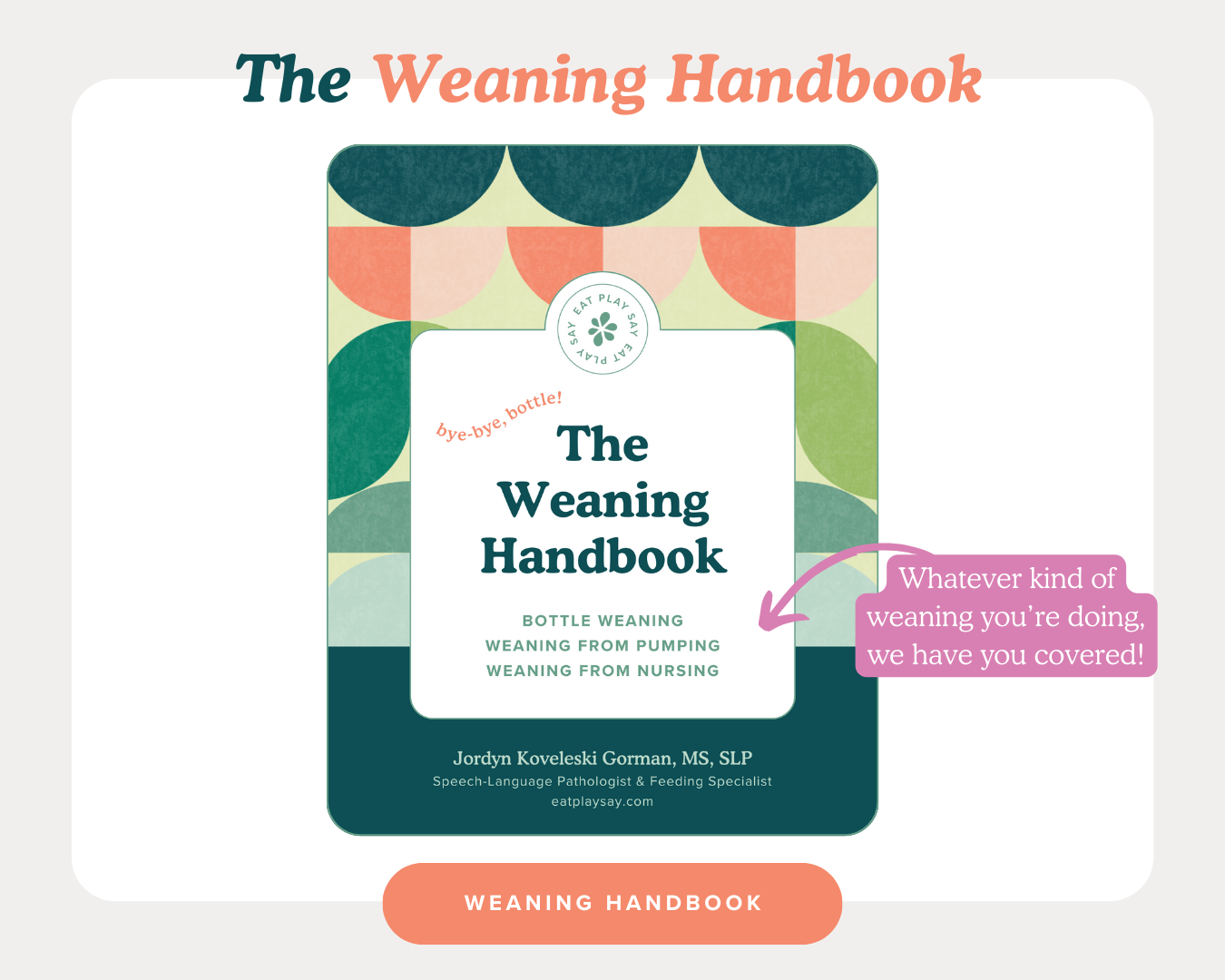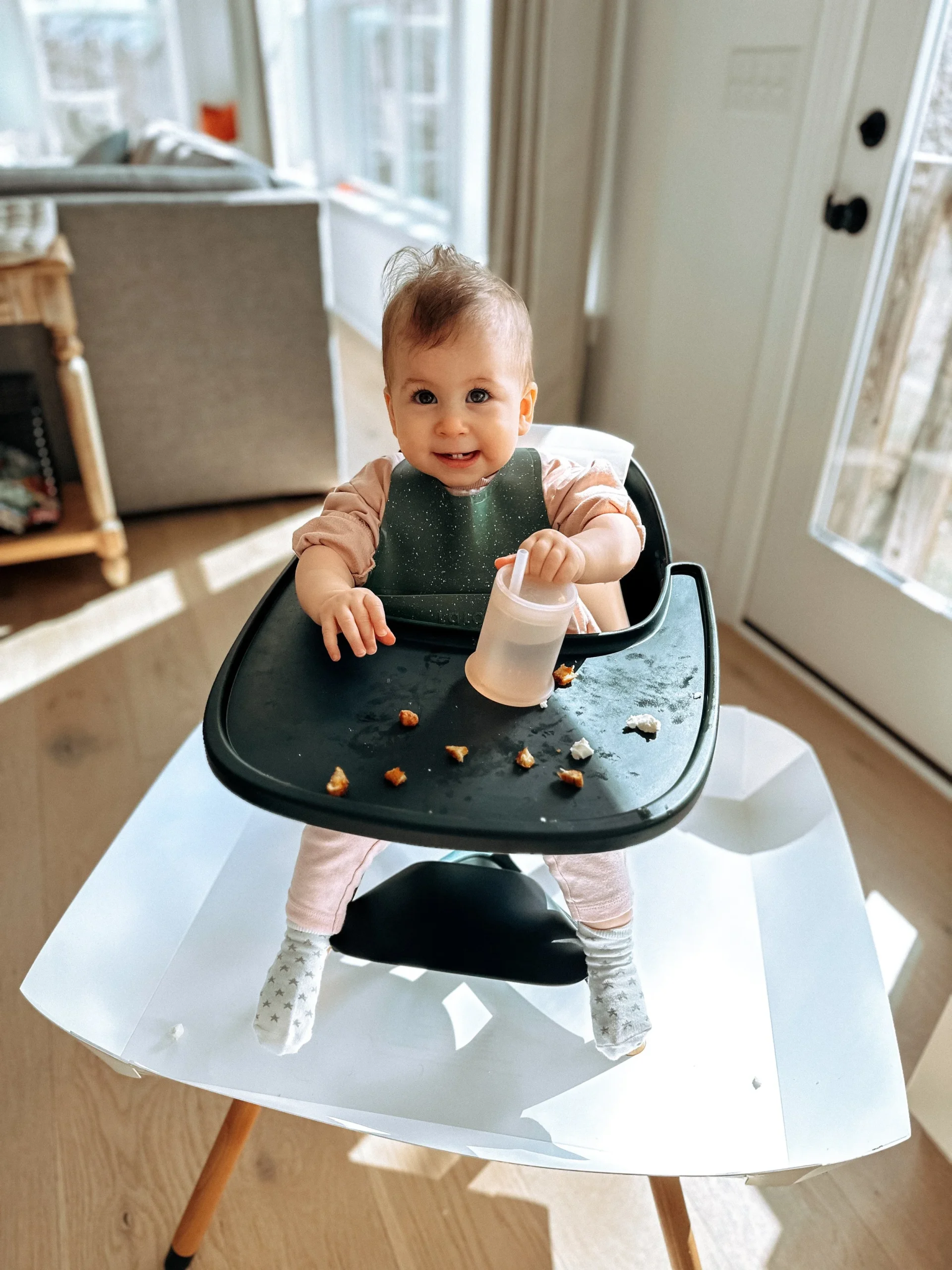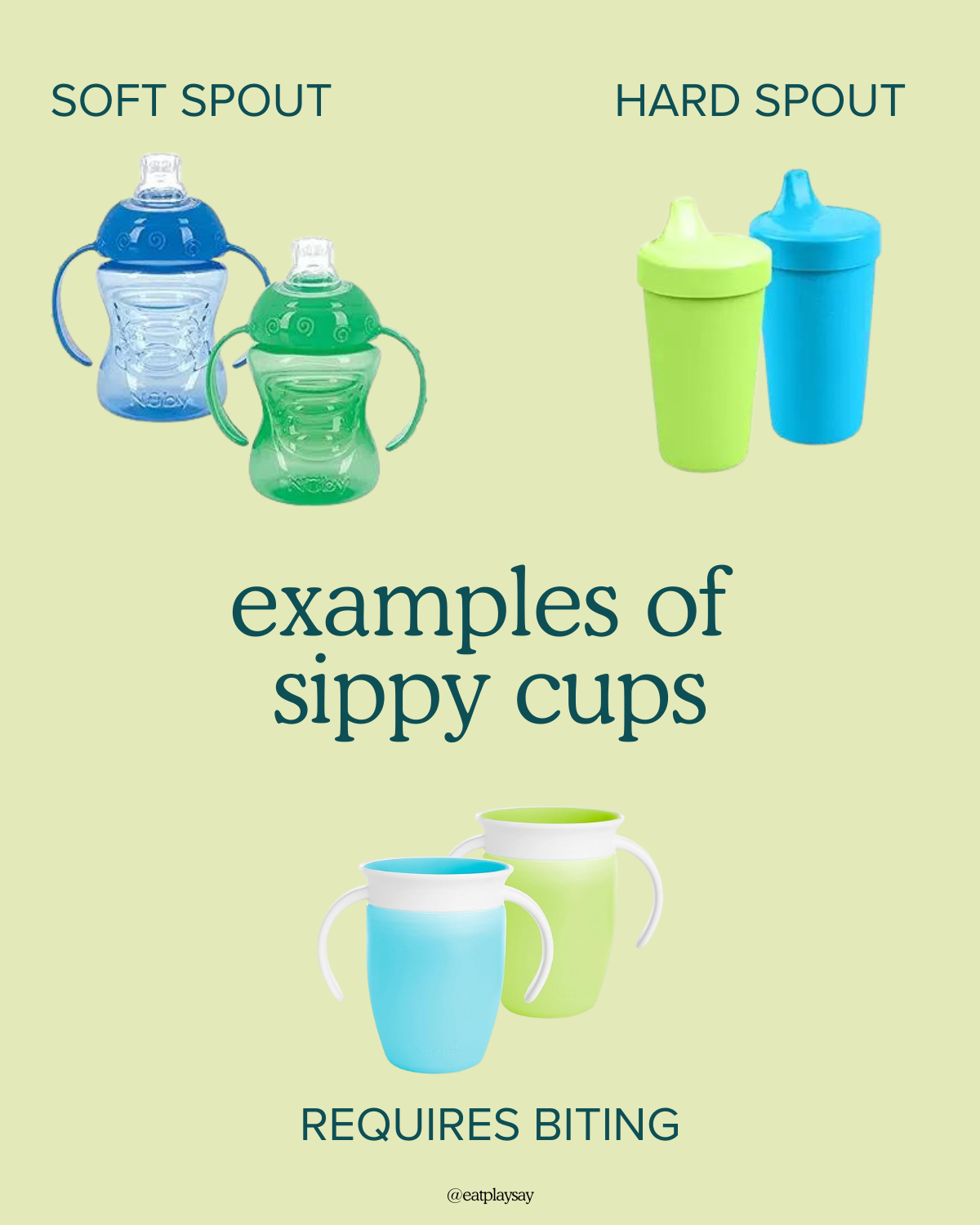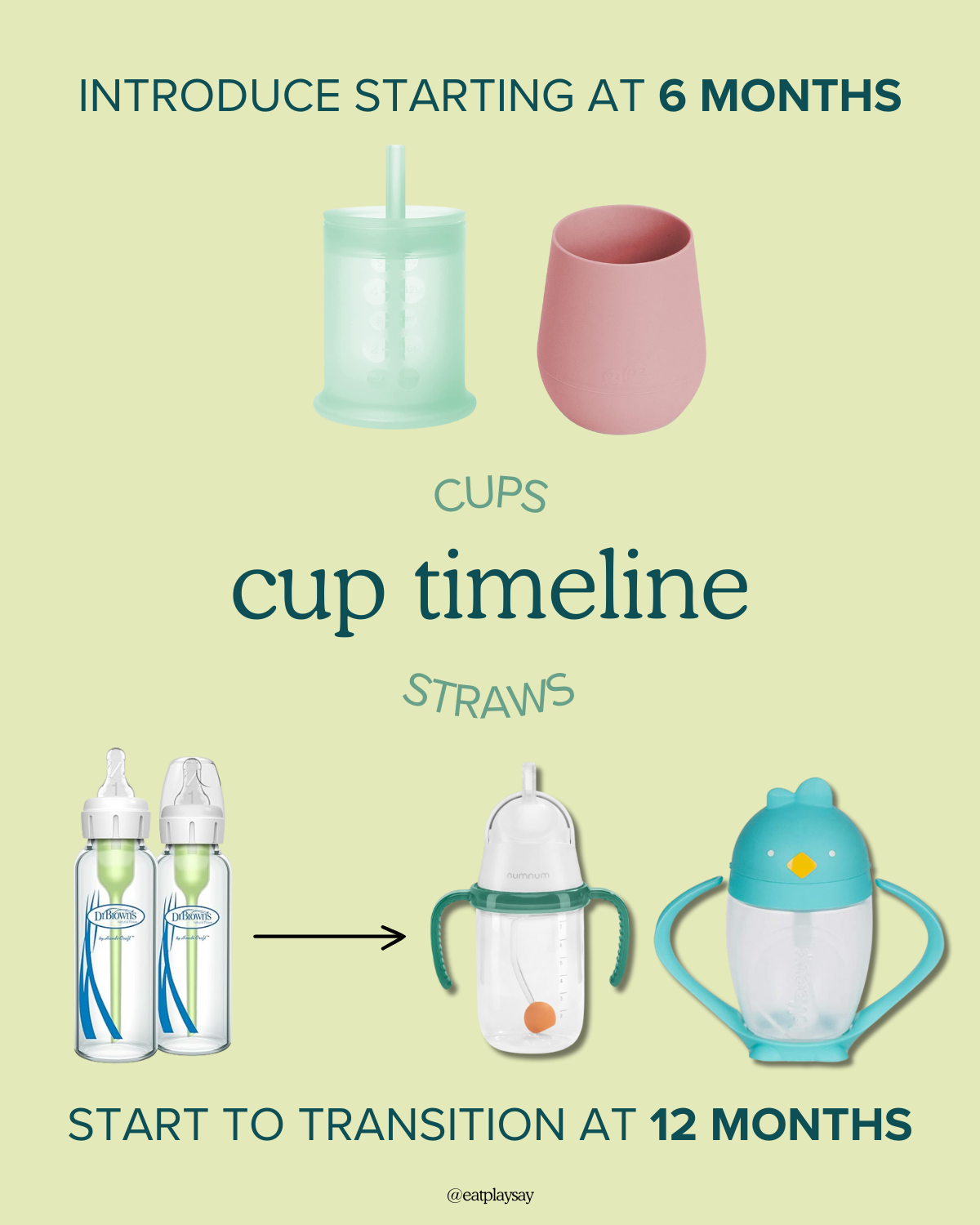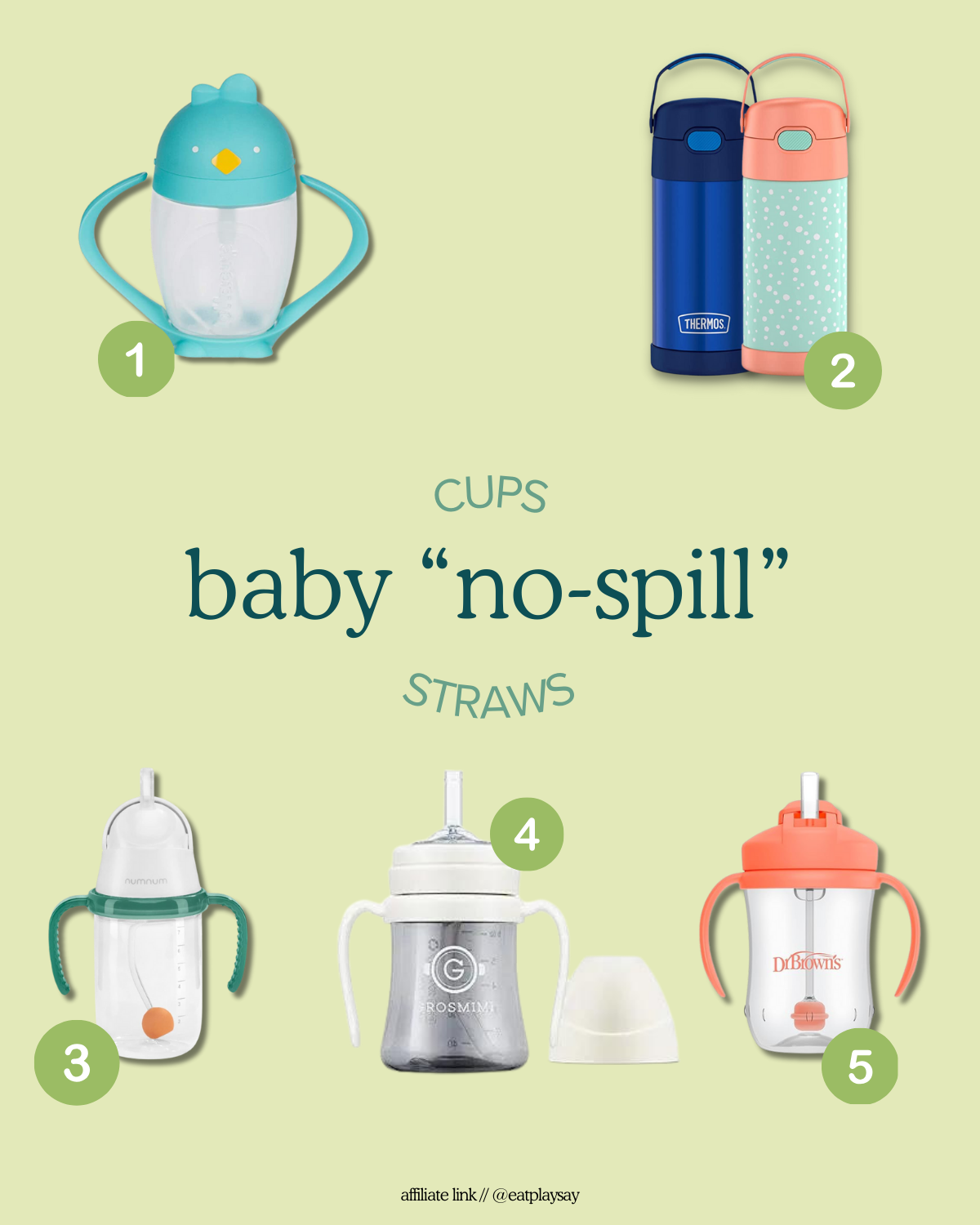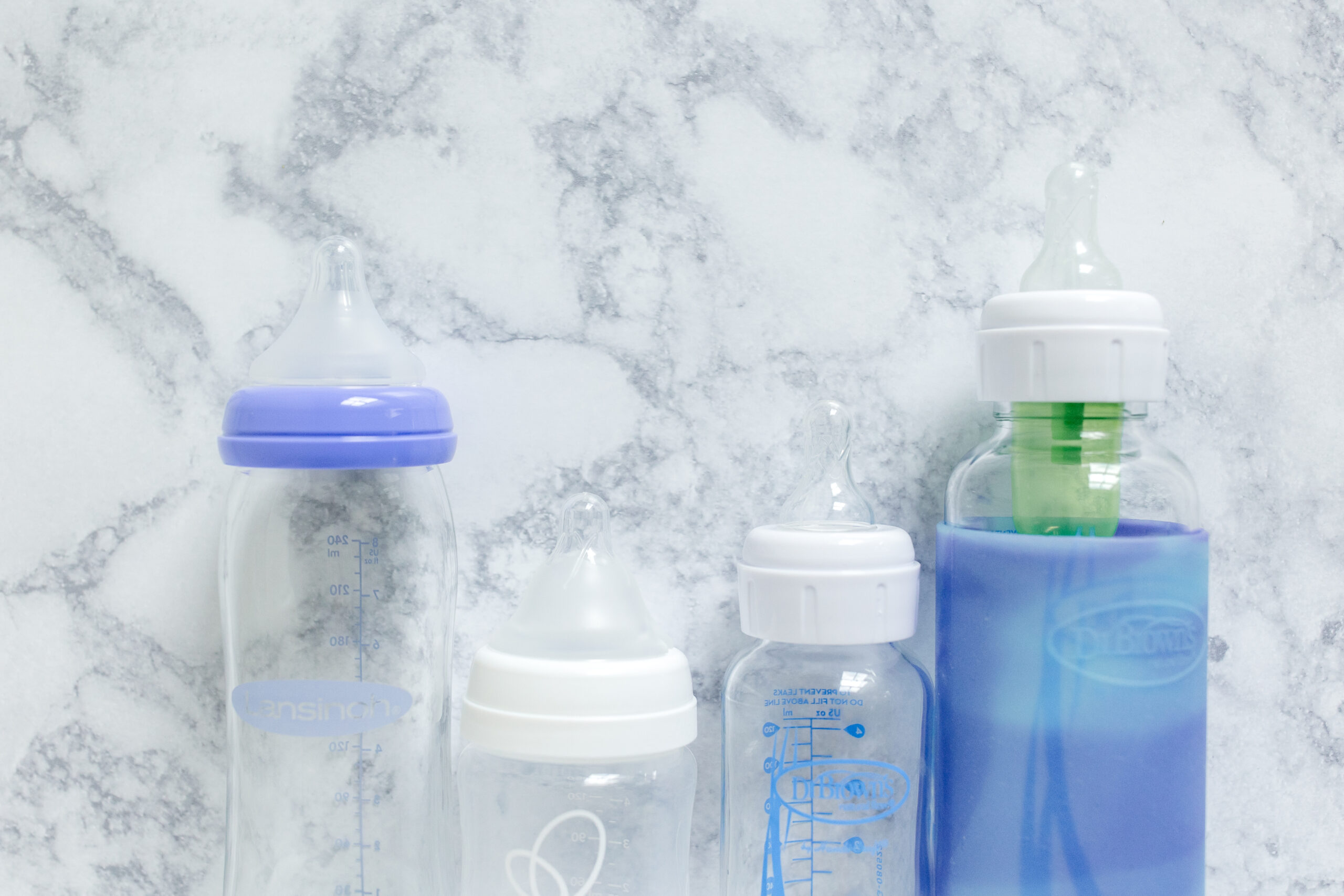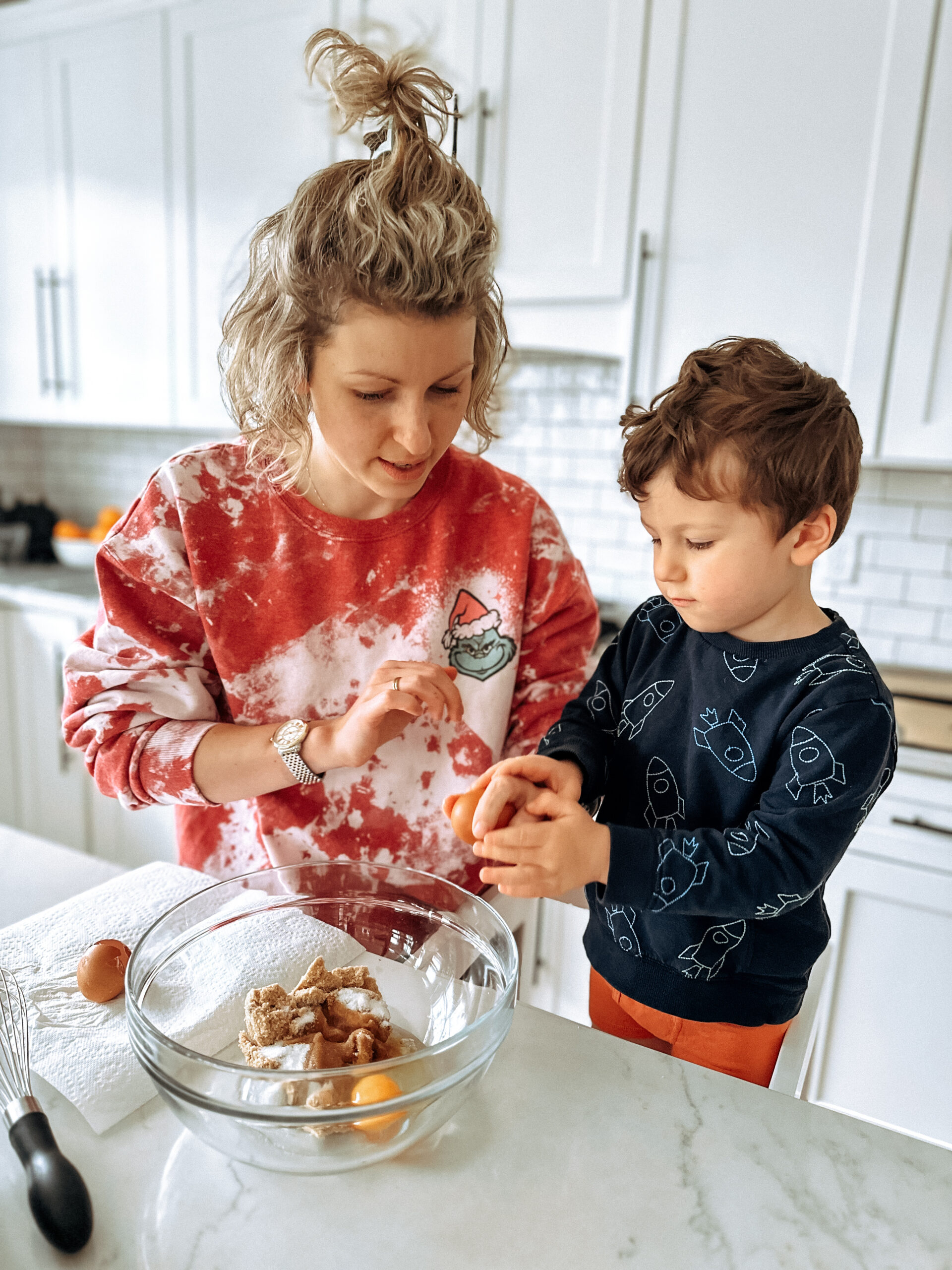TLDR; No, sippy cups aren’t “bad.” But they aren’t actually “good” either…
This page contains affiliate links. We will receive a commission on qualifying purchases using these links.
Travel Cups for Babies & Toddlers
Picture this scenario- your baby has been taking off using open cups and straw cups- you’re on the hunt for a great travel cup that won’t spill when you’re on-the-go. While walking through the aisles of your favorite store or searching on Amazon, you are likely overwhelmed by the options, trying to find the best one!
“What is the best sippy cup? Wait, what is a spout cup? Or do I want a straw cup? What is a ‘miracle cup?’ Do, I want one of those?”
How can you choose what’s “best” and how do you know what’s important when choosing? We have got you covered!
First, let’s explain the science…
For optimal oral motor development, we want to encourage sucking and swallowing patterns where muscle use (cheeks, lips, jaw, tongue) is balanced, the tongue can learn to elevate and retract while sucking and swallowing, and lips can rest gently on the spout or straw while sucking.
“Sippy” cups often have a longer bottle-like spout, have a valve that makes it more difficult to suck from, and/or have lids, tops, or spouts that require biting to suck (miracle 360 cups, we are looking at you!).
What is a “Sippy Cup?”
Below are examples of the types of cups we want to avoid or limit use as much as possible. These are cups that have a spout that sticks out from the top and rests on your little one’s tongue.
Usually some forceful sucking is required to get the liquid out and they are marketed heavily as “spill proof.” While no, these cups aren’t “bad,” they also were not designed with your child’s oral motor skills in mind.
Overall, these are not recommended for frequent, daily use, as they do not support maturing oral development.
While we can’t say that the use of sippy cups CAUSES speech delays, we also can’t say that they support oral development (more on this in the next section).
So, if we know that there are cups out there that don’t do the best for children from an oral development standpoint, let’s try our best to minimally use them or avoid them all-together!
Sippy Cups Do Not Support Oral Motor Development
Why? Because sippy cups encourage a low and forward tongue position in the mouth (just like a baby bottle!). We know that drinking from straws and open cups are preferred because they require the tongue to be retracted and high in the mouth. Not only is this an optimal position for drinking and eating, the tongue needs to be retracted and elevated for SPEECH!
Say the sound “eeeee” and pay attention to your tongue. Now say “arrrrrrr,” say the “t” sound, say “guh.” See what we mean?
The back of the tongue retracts and anchors in the mouth so the tongue tip or the middle of the tongue can hit all the spots in the mouth to make different sounds.
Without that strong retraction and elevation, speech will sound imprecise and slushy. As babies and toddlers learn how to say words and sounds, we want their tongues in the RIGHT SPOT! I know, this is a “light bulb” moment. Speech and feeding are very connected!
When to Use a Sippy Cup
As oral motor and feeding specialists, we often encourage parents to “skip the sippy” and stick to straws and open cups that will encourage better sucking and swallowing.
But, it is important to note that if your baby is struggling to use open cups or straw cups easily and it is impacting hydration or causing constipation, they may need to use a cup that is more bottle-like to help bridge the transition away from a bottle and maintain fluid intake.
And, yep, you guessed it- that cup is usually a spouted sippy cup. Short-term use of a sippy cup may help your child get to straw drinking! While we want to avoid it if we can, we also recognize the need for these types of cups, and aim to only use them for the short-term!
If baby needs a sippy cup…
If we had to choose, we would recommend parents pick a short soft-spout sippy cup so that it doesn’t sit too far in on baby’s tongue and it’s a similar texture to a silicone straw!
Parents can also consider finding a cup with a longer soft straw that sits further in on baby’s tongue so that they can use a suckling pattern to get the liquid out. Those can help get baby closer to drinking from a shorter straw!
While baby is drinking from a sippy cup, it will be important to practice frequently with straw and open cups to help make that transition off of a sippy cup and to a straw cup as soon as you can to help support maturing oral motor skills.
When to Introduce a Straw Cup?
You can start to introduce both open cups and straw cups around 6 months of age.
Baby will need a lot of support in the beginning when starting out with open cups and straws! Squeezable cups can help baby learn how to use a straw. Practicing small sips make a big difference over time.
Remember that baby’s MAIN form of nutrition and hydration in the first 12 months is breastmilk and/or formula (from nursing and/or bottles)! So only a little bit of water in cups is needed to practice as baby approaches toddlerhood.
Spill-Proof Travel Cup Recommendations
We also understand there are scenarios where a travel cup that prioritizes “spill-proof” is needed (car rides, trips, errands, play dates, etc). Your first thought may be to go to a sippy cup, but you don’t need to!
We have some great options to recommend that keep both oral motor development AND spillage in mind!
We’ve tested and approved these cups ourselves as adults and with babies and toddlers . These cups have short straws (which encourage lips to rest at the edge of the straw) and “weaker” valves (are low or no-spill, require muscles to work more in balance).
All of these are “no-spill” and support mature oral motor development. If you’re looking for stainless steel + silicone over plastic, Number 2 below is for you!
All in all, no, offering a sippy cup will not cause harm to your little one! But, it’s important to know why sippy cups exist and how they can impact oral motor skills as baby grows.
Bottle Weaning
Cup drinking should get easier over time as baby approaches their first birthday. If you’re noticing that your little one is nearing the age of bottle weaning (12-15 months of age) and is not able to transition away from a bottle to a straw cup, reaching out to a feeding specialist for some guidance can be beneficial.
The transition from bottle to straw cup is usually gradual and slow, so give your little one time. Help is out there if you need it!
You can check out our Weaning Handbook if you need some help!
